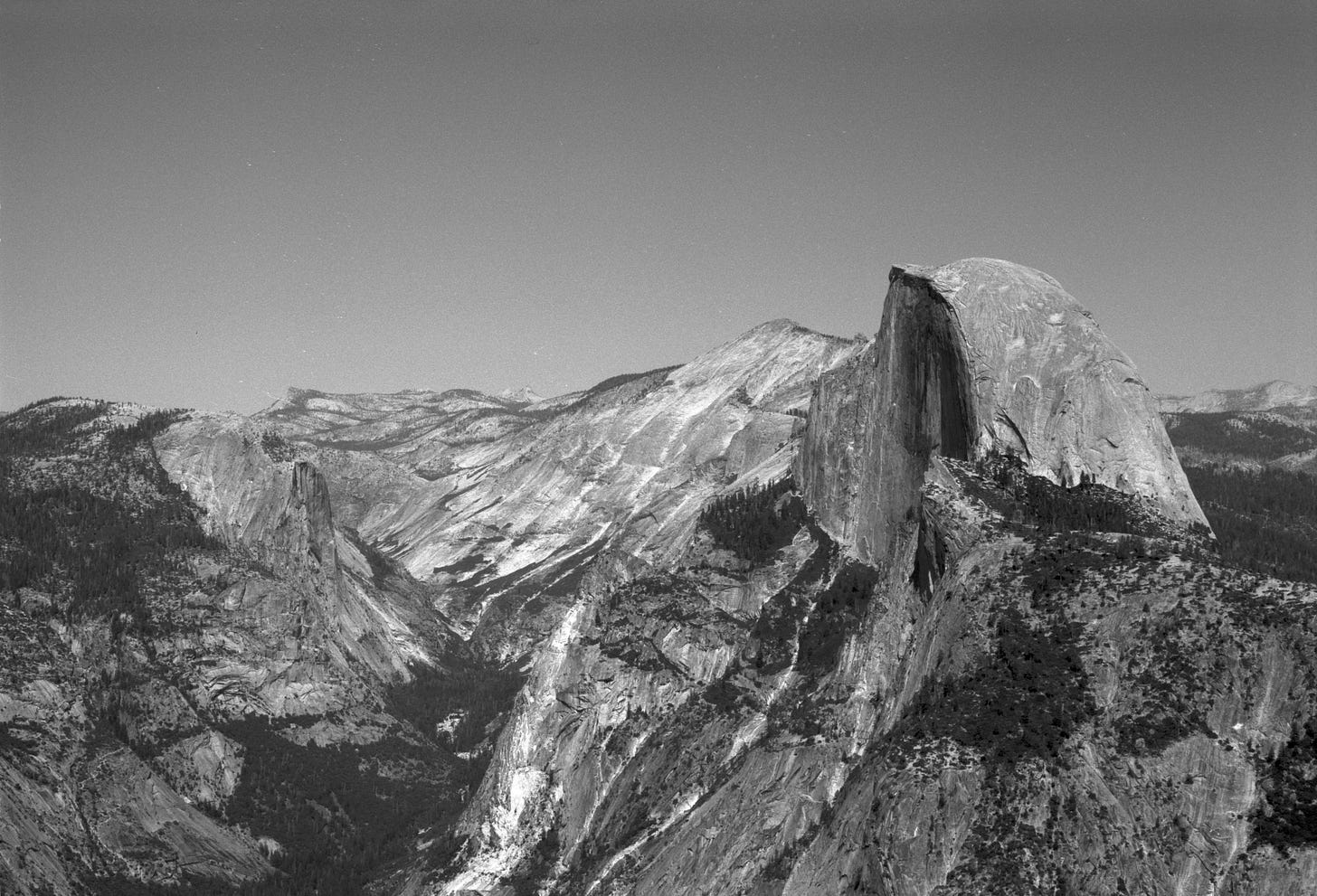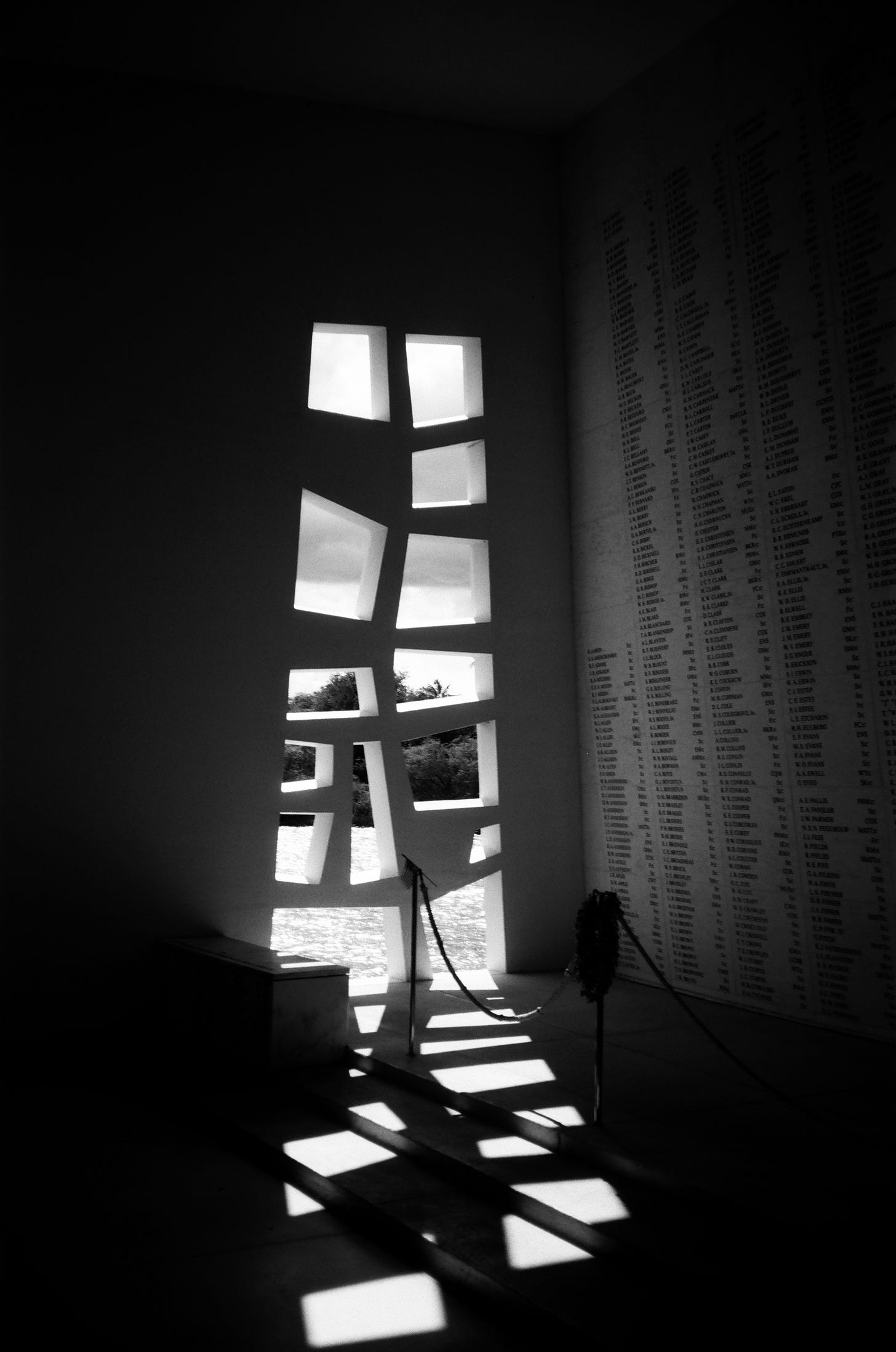Overview
Fujifilm Neopan 100 Acros II is a 100 speed black and white negative film released in 2019, and is the successor to the original Acros 100 which was discontinued in 2018. Known for its fine grain and positive reciprocity characteristics, Fuji claims it’s suited for “all normal indoor and outdoor photography as well as long exposure applications.” At $13 for a 36 shot roll, it’s slightly more expensive than comparable films like Ilford Delta 100 ($12) and Kodak TMax 100 ($11).
Andrew’s Thoughts
Camera: Canon AE-1 (Canon new FD 50mm f/1.8)
Development: Full Circle Fine Art
Scanning: Plustek 8200i SE, Silverfast 9
I brought a roll on a two day trip to Yosemite National Park, figuring the sunny days and sweeping landscapes would be perfect for this film. I unfortunately forgot my 28mm lens at home and ended up shooting the whole trip with a 50mm.
This was my first black and white film at 100 speed, and some prior reading led me to meter about a half to a full stop under box speed. I was able to get 36 shots out of the roll, one fewer than I’m able to get with some other films. The first two frames were lost to light leaks; I loaded the roll in direct sunlight so this was not completely unexpected. Silverfast 9’s Negafix does not include a profile for Acros II, so I used an Ilford Delta 400 profile and tweaked from there. I have heard of others using the Delta 100 profile, but I slightly preferred the look of the 400 as a starting point.
In hindsight, this may not have been the most fair test for Acros II. The primary goal of the first day was an ascent of the Echo Peaks, and photography was second priority. Lighting was strong midday overhead sun, with little in the way of interesting shadows.
On the second day I hit all the usual tourist spots, complete with the standard uninspired photos of Half Dome and Yosemite Valley.

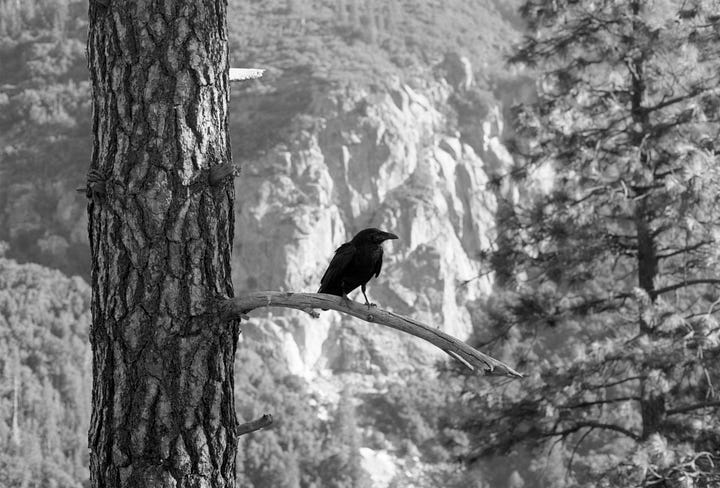

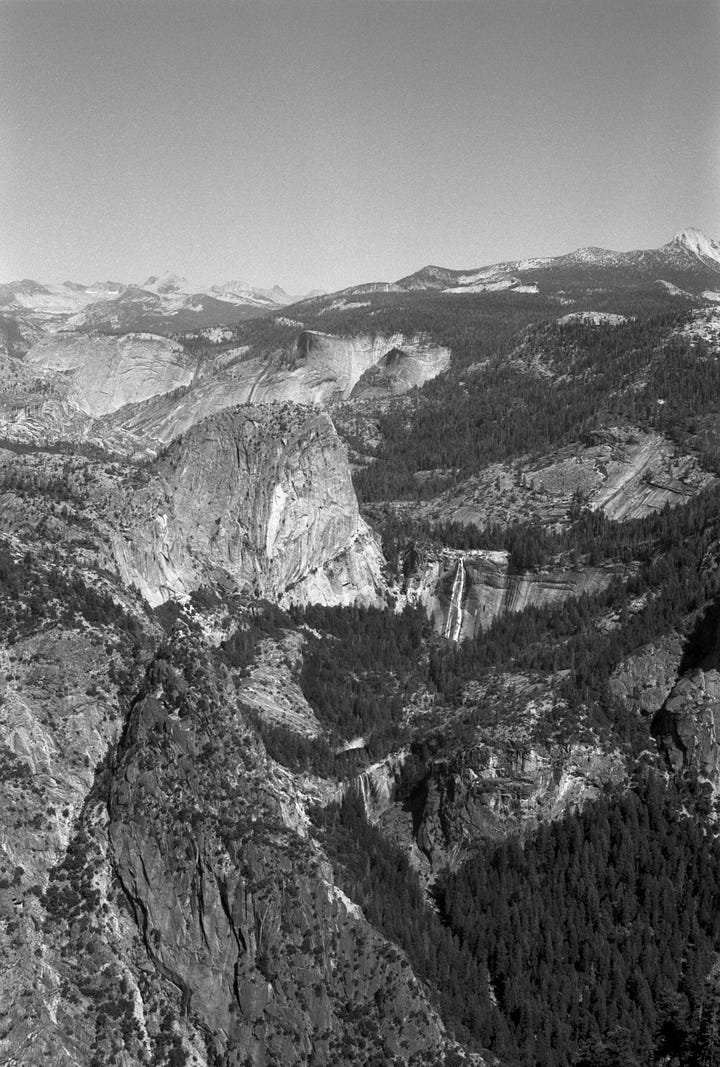
Looking at the results, the fine grain is evident and the photos have great detail. Latitude is good, and the slightly overexposed metering turned out nicely. However, and this is just personal preference, the grain is almost too fine, taking away some character and looking almost digital. This sentiment may partially be due to the flat lighting in some shots, so I’d be open to shooting another roll. I’d also like to test the reciprocity characteristics in the future with some long exposures. As mentioned earlier, this was my first 100 speed roll so I can’t compare to competitors like Delta 100 and TMax 100; I’m excited to shoot those and see how they stack up.
Eric’s Thoughts
Camera: Olympus XA
Metering: EI100
Development: Pro Photo Connection
Scanning: Noritsu (lab scanned)
All photos posted as scanned, no crops, edits, etc.
I picked up a roll on a whim because I was looking for 100 ISO black and white, but sat on the roll in the fridge for awhile looking for something to shoot with it. I ended up taking the roll with me to Hawaii with the intention of shooting the USS Arizona Memorial with it. I was shoehorned into loading into my aperture priority only Olympus XA when my Canonet started having shutter issues. I got 38 frames out of the roll and could have gotten 39 if I had shot the -1st frame (but I was traveling and didn’t want to miss a photo so I loaded and wound until the frame counter was at 0 instead of -1).
In frames where the grain is not super apparent (no big solid areas, many complex textures), the film didn’t really stand out as unique. That is to say, it felt almost clinically crisp like digital.
I really like the fine grain and the texture of the grain, but I wish there was a way to make it stand out more. While Acros isn’t particularly known for its contrast, I shot a few photos in very harsh light and really enjoyed the way the contrast emphasized grain in certain areas of the frame. I would be interested in pushing a roll 2 stops to see if this could be enhanced further.
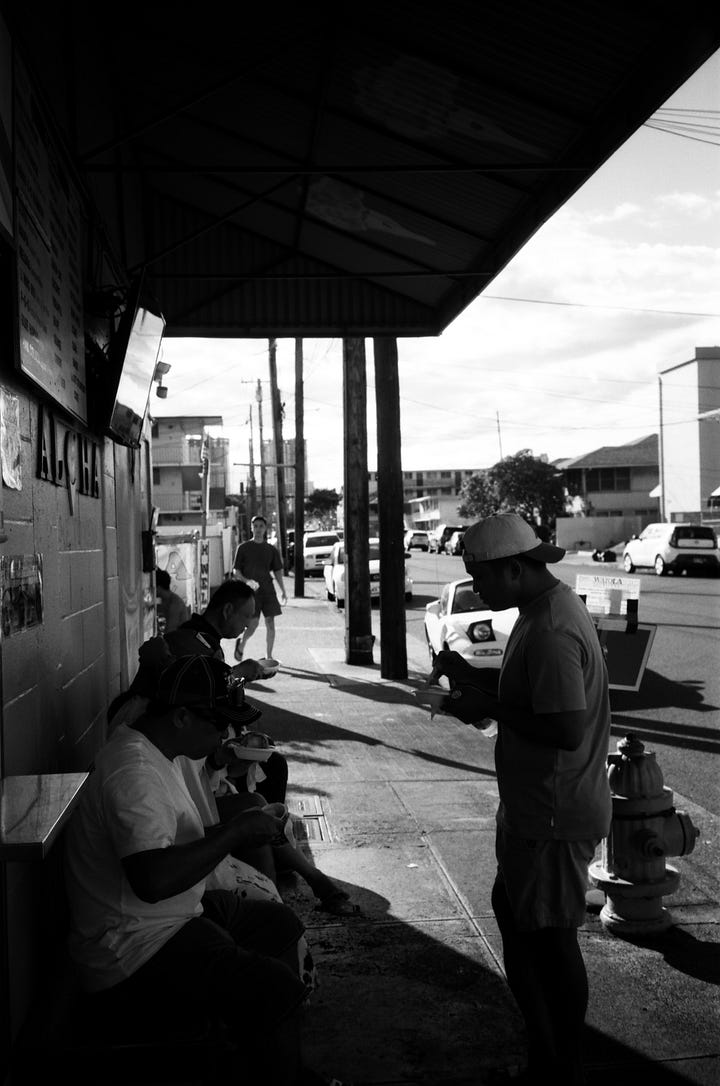

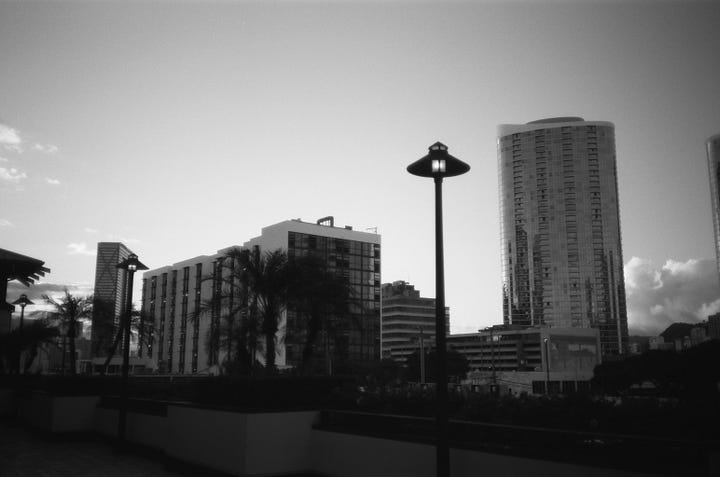
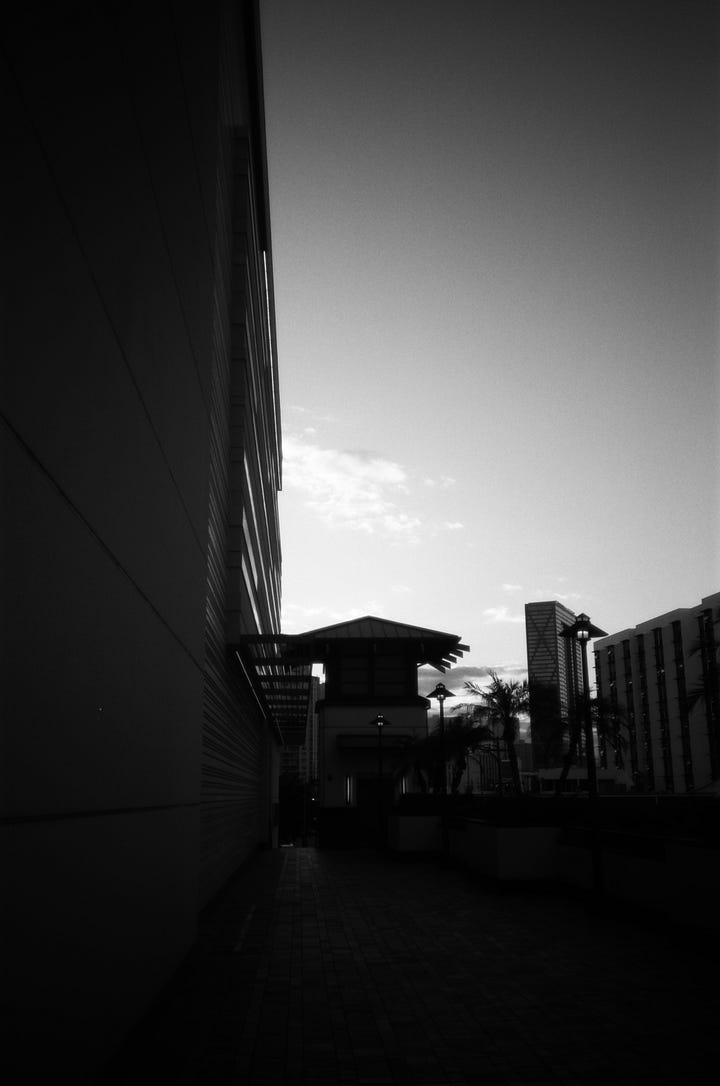
It rendered very nice landscapes, but my scenery was all very colorful and it feels like I lost something shooting black and white (I’m excited to see how my roll of Ektachrome looks.), If I could switch films on a whim (maybe a medium format with multiple film backs is in my future), I would definitely have a roll of this for landscapes (along with a roll of Ektar).
I shot some 1-2second exposures (the XA meter will let the shutter run that long but won’t let me know how long) and had no issues with reciprocity failure.
This probably isn’t a film I’d carry around everyday due to its speed, but I’d keep a roll around when traveling, especially if I’m not also bringing my digital equipment. It dovetails in nicely with the types of photos I like to shoot when traveling. It also sounds like a good roll to shoot long exposures on, but these days I don’t shoot much of that, though a nighttime photo walk with a tripod might be in my future.







